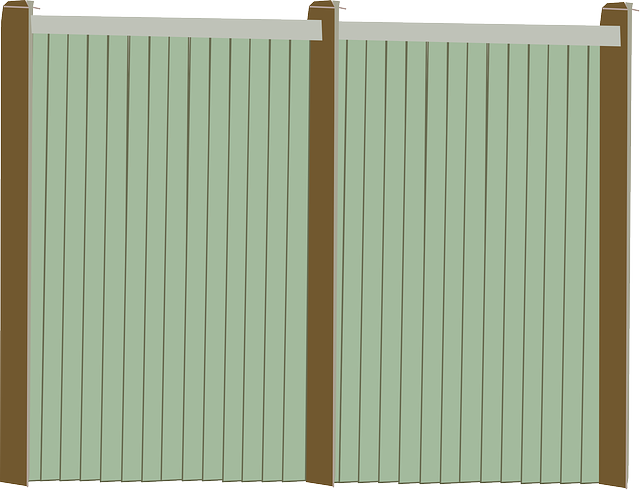In the pursuit of a secure outdoor sanctuary, privacy fences stand as indispensable structures. For residents of New Bedford, MA, opting for a custom privacy fence installation offers not just aesthetic appeal but also peace of mind. This comprehensive guide delves into the world of privacy fences, exploring various types and benefits, material selection, design customization, and an easy-to-follow installation process. By the end, you’ll be equipped to transform your outdoor space into a private retreat.
- Understanding Privacy Fences: Types and Benefits
- Choosing the Right Material for Your Fence
- Designing Your Ideal Privacy Fence
- Installation Process: Step-by-Step Guide
- Maintaining Your New Privacy Fence
Understanding Privacy Fences: Types and Benefits
Privacy fences are designed to create a secure, enclosed space outdoors, offering both visual and physical barriers. They come in various types, each serving different purposes and aesthetic preferences. Wooden fences, for instance, provide a classic look while delivering adequate privacy. These fences can be constructed using various wood species, treated for durability, and often feature intricate designs or finishing touches like stained colors or intricate carvings.
Metal fences offer a more modern alternative, characterized by their sleek lines and robust construction. They are known for their longevity and resistance to weathering, making them an excellent choice for those seeking low-maintenance privacy solutions. Additionally, these fences can be designed with different panel styles, providing options for both aesthetic appeal and security levels. Whether enhancing residential properties or commercial spaces, privacy fences cater to diverse needs, ensuring peace of mind and a sense of exclusivity in one’s outdoor environment.
Choosing the Right Material for Your Fence
When it comes to privacy fences, the first step is selecting the perfect material to suit your needs and preferences. Wood is a popular choice due to its natural beauty and ability to provide excellent privacy. However, it requires regular maintenance to protect against weather damage and pests. Alternatively, vinyl fencing is low-maintenance and highly durable, making it ideal for those seeking a long-lasting solution without the hassle of annual upkeep.
Consider your climate as well; metal fences can offer durability in harsh conditions but may not be as visually appealing as wood or vinyl. Each material has its advantages, so evaluating your priorities—whether it’s aesthetics, longevity, or low maintenance—is key to making an informed decision for your New Bedford fence installation.
Designing Your Ideal Privacy Fence
When designing your ideal privacy fence for your New Bedford, MA property, start by considering the style and material that best suit your home’s aesthetic. Wood fences offer a classic charm, with options like cedar or pine, while vinyl fences provide low-maintenance durability in various colors and textures. The height and length of your fence play a significant role in privacy levels; taller fences block more light and views, offering greater seclusion.
Integrate functional elements into your design to enhance privacy further. Consider adding lattice panels at the top for additional coverage or incorporating a gate for controlled access. Think about the layout of your outdoor space as well—fences can be customized to create defined areas for relaxing, entertaining, or gardening, ensuring you have the intimate spaces you desire while enjoying the benefits of increased privacy.
Installation Process: Step-by-Step Guide
The installation process for a privacy fence begins with a thorough site assessment to ensure proper measurements and planning. The first step is to clear the area, removing any debris or existing structures that may interfere. Next, the perimeter of the desired fence line is marked, ensuring it aligns with property boundaries.
Once the layout is finalized, posts are driven into the ground at regular intervals using a hammer or mechanical driver. These posts serve as the foundation for the entire fence. After the posts are securely in place, horizontal rails are attached, providing support for the fence panels. The panels themselves are then installed, fastened to both the posts and rails, creating a sturdy barrier that offers privacy and security.
Maintaining Your New Privacy Fence
After your new privacy fence is installed, proper maintenance will ensure its longevity and protect your investment. Regular cleaning with mild soap and water is recommended to keep the fence free from dirt, mold, and mildew. A soft brush can be used to gently scrub any built-up residue, especially in areas with frequent exposure to weather conditions or nearby trees.
Additionally, inspecting your fence for any signs of damage or wear is crucial. Promptly repair or replace damaged sections to maintain the structural integrity of the fence. Coating or sealing the fence annually can also protect it from the elements and enhance its overall appearance. Regular maintenance will ensure your privacy fence remains a functional and aesthetically pleasing addition to your property for years to come.
